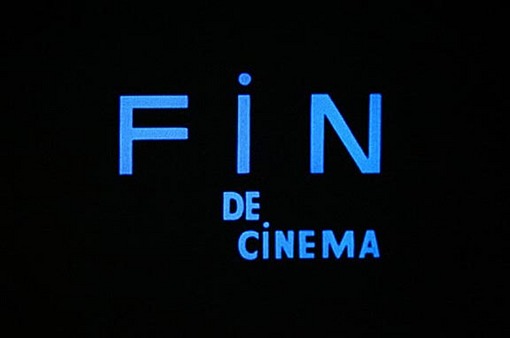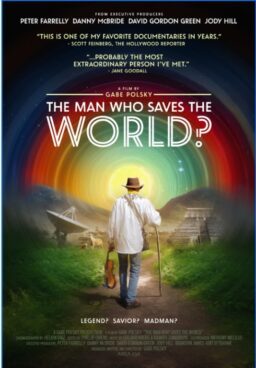In the summer of 1981, Robert Redford gathered novice and veteran filmmakers together for the first of what has become known as the Sundance Institute’s Directors and Screenwriters Labs. Eleven projects were chosen for the workshop (there are 13 for the 2010 program) — which, over the last 29 years, has included such films as Paul Thomas Anderson’s “Hard Eight,” Quentin Tarantino’s “Reservoir Dogs,” Tamra Jenkins’ “Slums of Beverly Hills,” Darren Aranofsky’s “Requiem for a Dream,” Hany Abu-Assad’s “Paradise Now,” John Cameron Mitchell’s “Hedwig and the Angry Inch” and Kimberly Pierce’s “Boys Don't Cry.”
That’s the old news.
I came across Roger Ebert’s account of this initial Sundance event (dated July 5, 1981), which we’d never before published online, and was struck by a bullet-point list of issues concerning those assembled — including the declining quality of films, festivals, distribution, exhibition, and the debilitating effects of home video and piracy. Does any of this sound familiar?
The big studios and the big movies dominate play dates on most of the nation’s movie screens, and there are only a handful of houses in most cities that will even consider booking a “specialized” film. Some 45 theater owners, bookers and distributors sat in the bright sunlight in the meadow at Sundance and agreed, almost without discussion, that:
● There are only seven or eight cities in North America in which a “specialized film” can get a decent booking and have any chance of a good run. They are New York, Boston, Washington, Chicago, Toronto, Los Angeles, San Francisco and, surprisingly, Seattle, which is the best city in the country to open a movie that’s out of the ordinary.
● College campuses used to supply large audiences for foreign, art and underground movies, but these days the kids go for action blockbusters like “The Empire Strikes Back,” just like everybody else.
● Big chains are completely uninterested in booking offbeat films. Like supermarkets, they’re concerned only with the turnstile. Chains with four- or six-screen multiplex theaters don’t even consider booking one of the screens with specialized films.
● Unless it’s a rare breakthrough like “La Cage Aux Folies,” foreign films are up against a wall at the American box office. There are only about 100 theaters in America that will book a serious, subtitled film, even if it’s by Ingmar Bergman or Federico Fellini.
● There is still a market for specialized films among local and campus film societies, but the backbone of that market, rental of movies in 16-mm. prints, is being under-minded by the widespread and illegal practice of videotaping movies and then showing them on video cassettes instead of renting them again. (Almost every campus in the country rips off films that way, it was agreed; even, though they’re breaking the law.)
● Exhibitors talked about the “strong want-to-see” factor that fuels blockbuster hits like “Superman II,” contrasting it with the curious “desire not to see” that handicaps specialized films. The average moviegoer is under 25. Ten or fifteen years ago, young moviegoers were more enthusiastic about offbeat, anti-establishment independent and foreign films. Now they are much more conformist. More sophisticated big-city teen-agers who once attended films by Jean-Luc Godard have now regressed to the level of “Friday the 13th, Part II.” Today’s young filmgoers have a herd instinct and are reluctant to take a chance. In a sense, they “wear” movies like they wear clothes, attending a movie that their fashion-sense suggests will look good on them.
Compare that with, for instance, this scathing assessment in The Independent of the 2010 Cannes Film Festival, which begins Wednesday (“Has Cannes lost the plot?“):
If you want to know why film festivals (even Cannes, the biggest of them all) are struggling to maintain their relevance, start with Jean-Luc Godard.
In Cannes next week, Godard, now 79, will be presenting what many believe will be his final feature: Film Socialisme. In advance of the premiere, the arch-provocateur has made a subversive trailer, which lasts under two minutes and shows not just highlights but the entire film speeded up. In the frenetic digital age, Godard is telling us, audiences don’t have the time or the patience to go to festivals to watch 35mm prints of art-house movies in cinemas. They want instant 90-second gratification on YouTube.
Godard is one of the legendary figures in Cannes history, leading protests in 1968, showing many of his films there. Now he regards it as a place to sell movies, not to celebrate the art of cinema. “Now, it’s just for publicity. People come to Cannes just to advertise their films,” he said on one of his last forays to the festival. […]
Way back in 1957, François Truffaut, when he was still a fiery young journalist, launched an outspoken attack on Cannes. He wrote that French cinema was dying “from its false legends” and its preoccupation with “quality cinema”, and called Cannes “a failure dominated by compromises, schemes and faux pas.” If he was still alive, Truffaut might have thought that Cannes today is in need of some creative renewal. We are in a world of 3D and Avatar, of file-sharing and video on demand. Cinema attendance may be booming, but big event movies are dominating at the box-office, not art-house fare. In the face of rapid and jarring technical change, the major European festivals are carrying on much as they have always done, showing 35mm prints of new films by venerable auteurs to audiences of critics who themselves appear to be growing older and older.
There was a time when these festivals seemed at the absolute centre of debates about cinema. Whenever, and wherever, new talent emerged, whether it was film-makers from Iran or Romania or Argentina, the festivals would champion it – and the films would be given an international life on the back of their festival screenings.
Arguably, the role of film festivals is now changing. Where once they showcased the new, they are now more concerned with protecting an old and increasingly endangered tradition of auteur cinema. Movies can now be watched on phones, on TVs and on the internet. The technology of cinema has advanced in rapid fashion. Whether the aesthetics of film-making have kept pace is another question altogether. Critics would be very hard pressed to argue that there are better, formally more sophisticated movies being made today than there were when auteurs like Jean Renoir, Andrei Tarkovsky and Stanley Kubrick were in their prime. Festivals continue to programme work that is in the spirit of such auteurs. As they do so, their relevance risks dwindling. As Jean-Luc Godard’s speeded-up version of his new film suggests, outside these festivals, fewer and fewer spectators have the time or the inclination to watch such fare.
That’s worthy of another discussion altogether (does upholding traditional standards of auteurist cinema at an old festival best-known for topless starlets on the beach put the event at risk of becoming irrelevant — or any more irrelevant than it has ever been?), but I hope the point is obvious: Yes, in most respects the state of movies is bad — perhaps as bad as it has ever been. And we’ve been saying that ever since the talkies came in.
That doesn’t make the above complaints any less true, but perhaps it offers a little perspective… even, as David St. Hubbins once said, “too fucking much perspective.”











